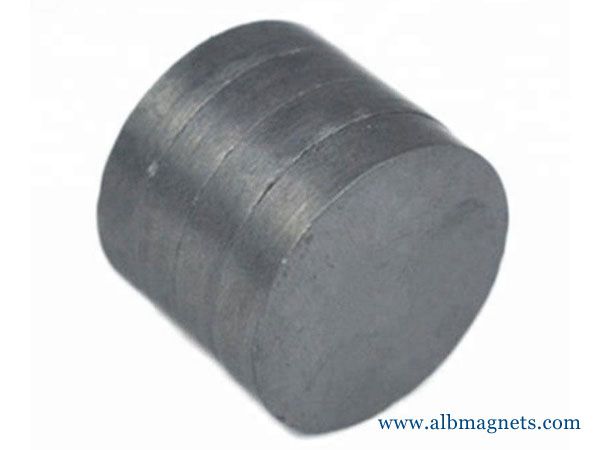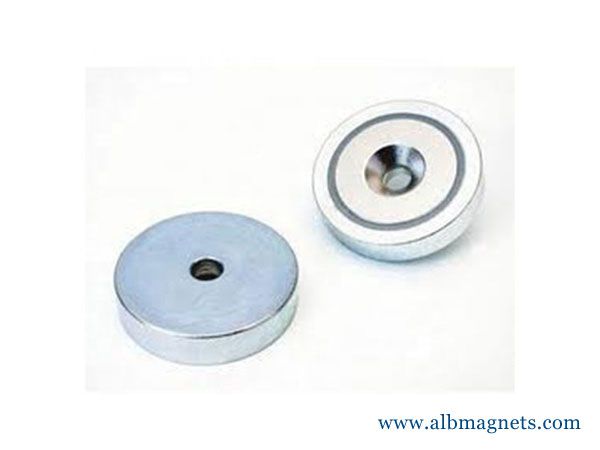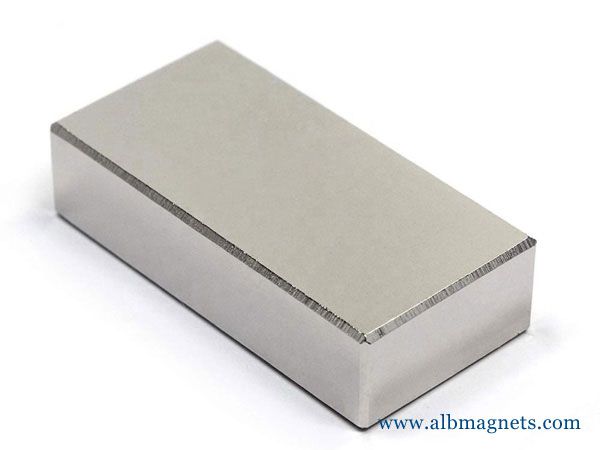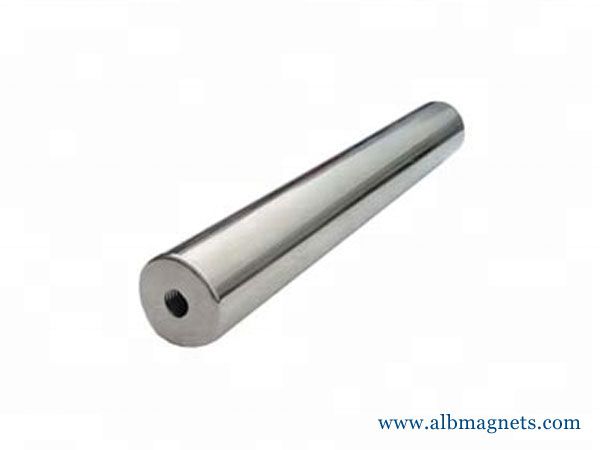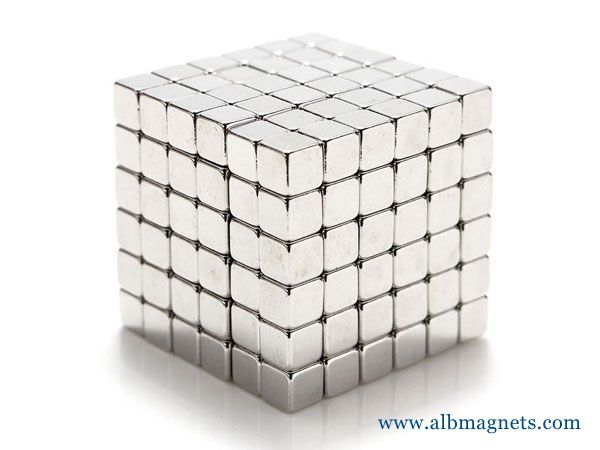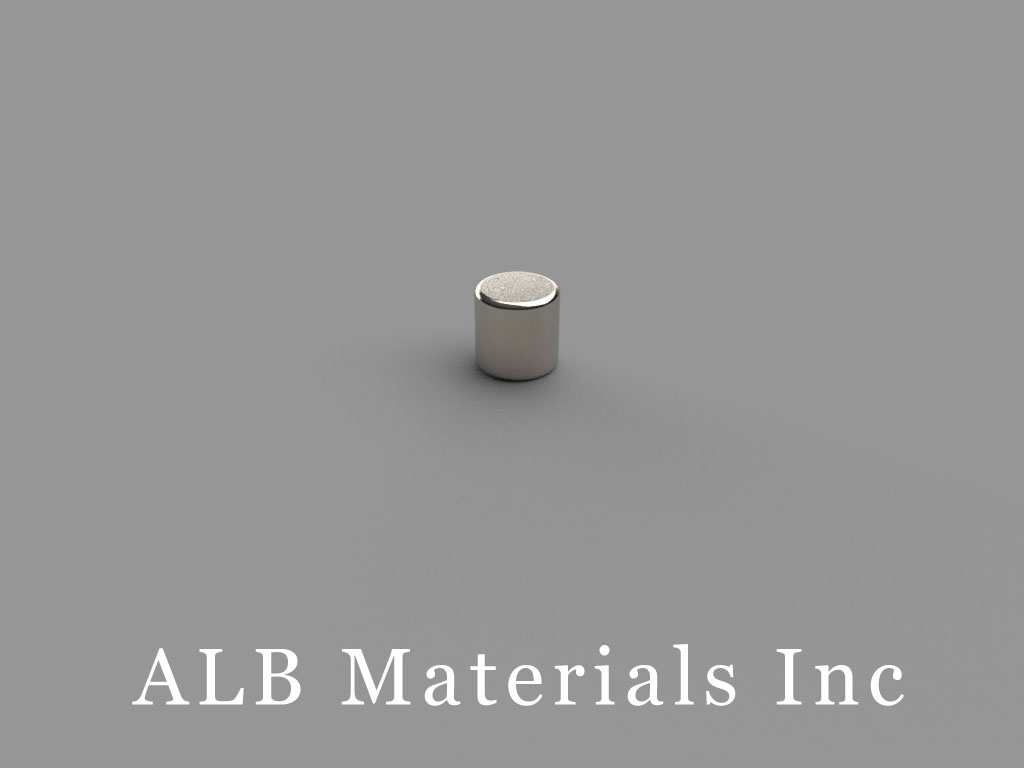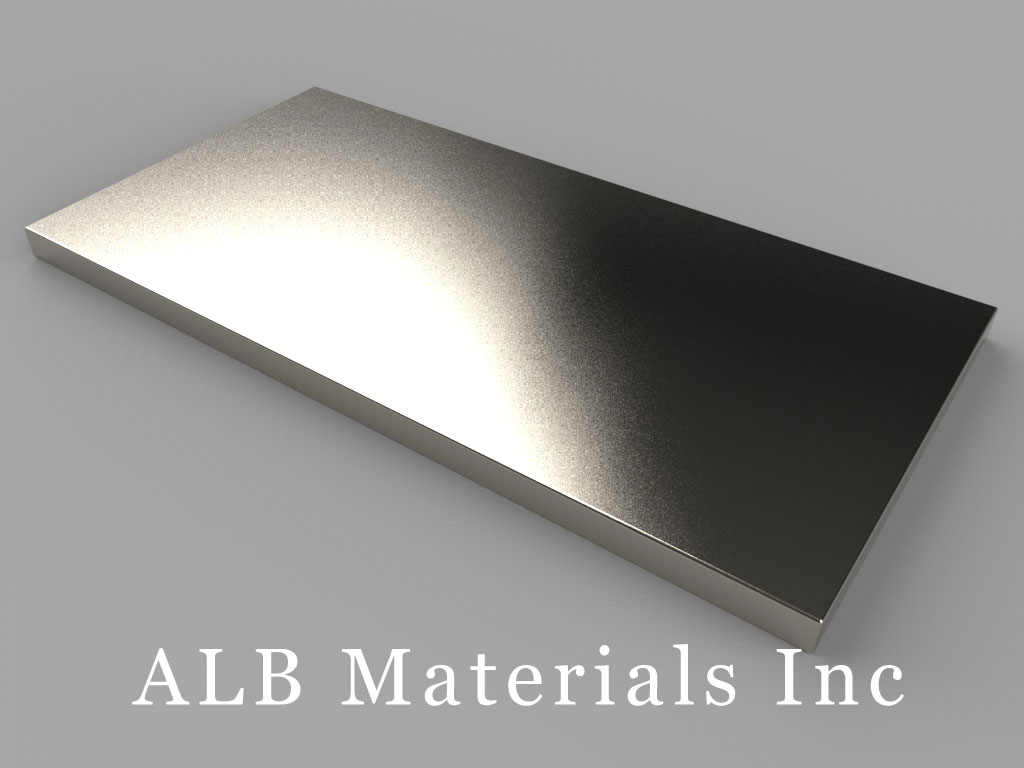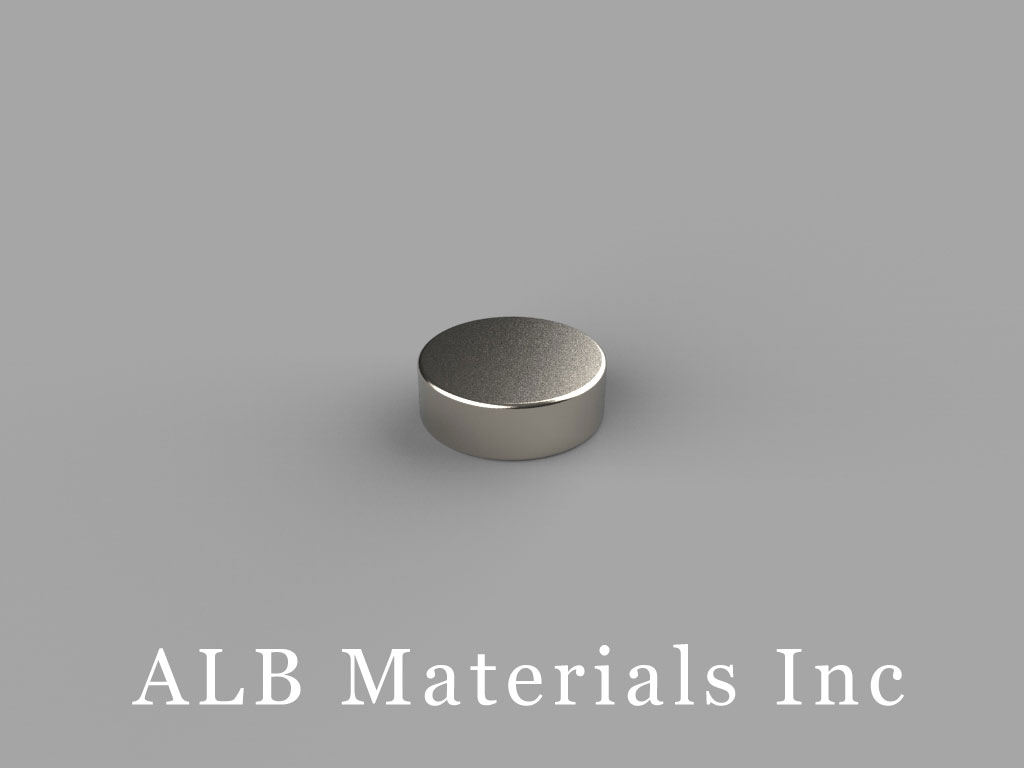401 Ryland St. Ste 200-A,
Reno, NV 89502
United States
E-mail: sales@albmaterials.com
- R422 Neodymium Magnets, 1/4 inch od x 1/8 inch id x 1/8 inch thick
- DD6 Neodymium Magnets, 13/16 inch dia. x 3/8 inch thick
- B50x12x2mm Neodymium Magnet, 50 x 12 x 2mm Block Magnet
- DDY8 Neodymium Magnets, 13/16 inch dia. x 2 1/2 inch thick
- RX033CS-S Neodymium Magnets, 1 inch od x 3/16 inch thick with countersunk hole for #10 screw
- DB6 Neodymium Magnets, 11/16 inch dia. x 3/8 inch thick
- MMS-D-X8 Standard Mounting Magnets
- D-D50H5-N52 Neodymium Magnet, 50x5mm Disc Magnet
- DCH2 Neodymium Magnets, 3/4 inch dia. x 2/10 inch thick
- RE22CS-N Neodymium Magnets, 7/8 inch od x 1/8 inch thick with countersunk hole for #8 screw
- D-D20H10-N45SH Neodymium Magnet, 20x10mm Disc Magnet
- XLTK-BLU Magnetic Thumbtacks
- B224 Neodymium Magnets, 1/8 inch x 1/8 inch x 1/4 inch thick
- XLTK-WHT Magnetic Thumbtacks
- B-W6H1L10-N50 Neodymium Magnet, 10x6x1mm Block Magnet
- B771 Neodymium Magnets, 7/16 inch x 7/16 inch x 1/16 inch thick
Permanent Magnet And Electromagnets
Permanent Magnet and Electromagnets
Define ferromagnet.
Only certain materials, such as iron, cobalt, nickel, and gadolinium, exhibit strong magnetic effects.
Such materials are called ferromagnetic, after the Latin word for iron, Ferrum.
A group of materials made from the alloys of the rare earth elements is also used as strong and permanent magnets;
a popular one is a neodymium.
Other materials exhibit weak magnetic effects, which are detectable only with sensitive instruments.
Not only do ferromagnetic materials respond strongly to magnets (the way iron is attracted to magnets), they can also be magnetized themselves—that is, they can be induced to be magnetic or made into permanent magnets.
An unmagnetized piece of iron is placed between two magnets, heated, and then cooled, or simply tapped when cold.
The iron becomes a permanent magnet with the poles aligned as shown: its south pole is adjacent to the north pole of the original magnet, and its north pole is adjacent to the south pole of the original magnet.
Note that there are attractive forces between the magnets.
When a magnet is brought near a previously unmagnetized ferromagnetic material, it causes local magnetization of the material with unlike poles closest, as in Figure 1.
(This results in the attraction of the previously unmagnetized material to the magnet.) What happens on a microscopic scale is illustrated.
The regions within the material called domains to act like small bar magnets.
Within domains, the poles of individual atoms are aligned.
Each atom acts like a tiny bar magnet.
Domains are small and randomly oriented in an unmagnetized ferromagnetic object.
In response to an external magnetic field, the domains may grow to millimeter size, aligning themselves.
This induced magnetization can be made permanent if the material is heated and then cooled, or simply tapped in the presence of other magnets.
(a) An unmagnetized piece of iron (or other ferromagnetic material) has randomly oriented domains.
(b) When magnetized by an external field, the domains show greater alignment, and some grow at the expense of others.
Individual atoms are aligned within domains;
each atom acts like a tiny bar magnet.
Conversely, a permanent magnet can be demagnetized by hard blows or by heating it in the absence of another magnet.
Increased thermal motion at higher temperatures can disrupt and randomize the orientation and the size of the domains.
There is a well-defined temperature for ferromagnetic materials, which is called the Curie temperature, above which they cannot be magnetized.
The Curie temperature for iron is 1043 K (770ºC), which is well above room temperature.
There are several elements and alloys that have Curie temperatures much lower than room temperature and are ferromagnetic only below those temperatures.
Electromagnets
Early in the 19th century, it was discovered that electrical currents cause magnetic effects.
The first significant observation was by the Danish scientist Hans Christian Oersted (1777–1851), who found that a compass needle was deflected by a current-carrying wire.
This was the first significant evidence that the movement of charges had any connection with magnets.
Electromagnetism is the use of electric currents to make magnets.
These temporarily induced magnets are called electromagnets.
Electromagnets are employed for everything from a wrecking yard crane that lifts scrapped cars to control the beam of a 90-km-circumference particle accelerator to the magnets in medical imaging machines.
Instrument for magnetic resonance imaging (MRI).
The device uses a superconducting cylindrical coil for the main magnetic field.
The patient goes into this “tunnel” on the gurney.
Figure 4 shows the response of iron filings to a current-carrying coil and to a permanent bar magnet.
The patterns are similar.
In fact, electromagnets and ferromagnets have the same basic characteristics—for example, they have north and south poles that cannot be separated and for which like poles repel and unlike poles attract.
Iron filings near (a) a current-carrying coil and (b) a magnet act like tiny compass needles, showing the shape of their fields.
Their response to a current-carrying coil and a permanent magnet is seen to be very similar, especially near the ends of the coil and the magnet.
Combining a ferromagnet with an electromagnet can produce particularly strong magnetic effects.
(See Figure 5.) Whenever strong magnetic effects are needed, such as lifting scrap metal, or in particle accelerators, electromagnets are enhanced by ferromagnetic materials.
Limits to how strong the magnets can be made are imposed by coil resistance (it will overheat and melt at sufficiently high current), and so superconducting magnets may be employed.
These are still limited because superconducting properties are destroyed by too great a magnetic field.
An electromagnet with a ferromagnetic core can produce very strong magnetic effects.
The alignment of domains in the core produces a magnet, the poles of which are aligned with the electromagnet.
Figure 6 shows a few uses of combinations of electromagnets and ferromagnets.
Ferromagnetic materials can act as memory devices because the orientation of the magnetic fields of small domains can be reversed or erased.
Magnetic information storage on videotapes and computer hard drives are among the most common applications.
This property is vital in our digital world.
An electromagnet induces regions of permanent magnetism on a floppy disk coated with a ferromagnetic material.
The information stored here is digital (a region is either magnetic or not);
in other applications, it can be analog (with a varying strength), such as on audiotapes.
Current: The Source of All Magnetism
An electromagnet creates magnetism with an electric current.
In later sections we explore this more quantitatively, finding the strength and direction of magnetic fields created by various currents.
But what about ferromagnets? Figure 7 shows models of how electric currents create magnetism at the submicroscopic level.
(Note that we cannot directly observe the paths of individual electrons about atoms, and so a model or visual image, consistent with all direct observations, is made.
We can directly observe the electron’s orbital angular momentum, its spin momentum, and subsequent magnetic moments, all of which are explained with electric-current-creating subatomic magnetism.) Currents, including those associated with other submicroscopic particles like protons, allow us to explain ferromagnetism and all other magnetic effects.
Ferromagnetism, for example, results from an internal cooperative alignment of electron spins, possible in some materials but not in others.
Crucial to the statement that electric current is the source of all magnetism is the fact that it is impossible to separate north and south magnetic poles.
(This is far different from the case of positive and negative charges, which are easily separatedd.) A current loop always produces a magnetic dipole—that is, a magnetic field that acts like a north pole and south pole pair.
Since isolated north and south magnetic poles, called magnetic monopoles, are not observed, currents are used to explain all magnetic effects.
If magnetic monopoles did exist, then we would have to modify this underlying connection that all magnetism is due to electrical current.
There is no known reason that magnetic monopoles should not exist—they are simply never observed—and so searches at the subnuclear level continue.
If they do not exist, we would like to find out why not.
If they do exist, we would like to see evidence of them.
Electric Currents and Magnetism
Electric current is the source of all magnetism.
(a) In the planetary model of the atom, an electron orbits a nucleus, forming a closed-current loop and producing a magnetic field with a north pole and a south pole.
(b) Electrons have spun and can be crudely pictured as rotating charge, forming a current that produces a magnetic field with a north pole and a south pole.
Neither the planetary model nor the image of a spinning electron is completely consistent with modern physics.
However, they do provide a useful way of understanding phenomena.
Difference between Permanent Magnet and Electromagnet is magnetic field and strength. In Electromagnet, the magnetic field is created by a wire-wound coil but the magnetic field of Permanent (Bar) Magnet cannot be changed.
A permanent magnet is made of ferromagnetic material, which is magnetized by a strong external magnetic field. The magnetically hard material that is used keeps part of its magnetization after the external magnetic field is turned off. The electromagnet is a temporary magnet. It can produce a very strong magnetic field.
In an electromagnet, the magnetic field is created through electric current in a wire-wound coil and strengthened by a soft-iron core.
As soon as you turn off the power, the soft-iron core loses its magnetization.
A permanent magnet is made of ferromagnetic material, which is magnetized by a strong external magnetic field.
How Is an Electromagnet Different From a Regular Bar Magnet?
Magnetism is a natural force that allows magnets to interact with other magnets, and certain metals, at a distance.
Each magnet has two poles, named the “north” and “south” poles.
Like magnetic poles push each other away and different poles pull each other closer.
All magnets attract certain metals to them.
There are two kinds of magnets.
There are naturally occurring magnets and magnets made of electrical parts, called “electromagnets.”
Link Between Electricity And Magnetism
Electricity and magnetism, though seemingly two separate forces are in fact closely interconnected.
Discovered by the physicist Michael Faraday in the 19th century, the law of electromagnetic induction shows that moving electrical charges create magnetic fields.
This is the basis for the existence of naturally occurring magnets and man-made electromagnets, according to Kristen Coyne of the National High Magnetic Field Laboratory.
Natural Magnets
With naturally occurring magnets, the current of moving electric charges that creates the magnetic field is generated inside the substance of the magnet.
Atoms, the tiny particles that make up all physical objects, are made up out of charged electrons orbiting nuclear particles.
Because the electrons are constantly moving around the nucleus, they are constantly creating magnetic fields.
Why Natural Magnets Have Magnetic Fields
In most materials, the north and south poles of these tiny atomic magnets point every which way.
This makes the effects of each cancel each other out, and the material is left nonmagnetic.
In some materials, mostly metals, these tiny magnets line up and make the entire object magnetic.
Electromagnet Parts
An electromagnet is a device made up of three simple parts.
A coil of wire is wound around a core of metal, usually iron.
A battery or other power source is connected to the coil of wire.
The wire is generally very thin and insulated by enamel, to further keep the size down.
How Electromagnets Work
When voltage is applied to the coil, then an electric current begins to flow through it.
This causes a magnetic field to form around the wire.
The coil shape forces the magnetic field of the current into a special configuration.
All the fields of each loop of the coil line up so that the effect is that of a natural bar magnet.
One end of the coil is a north pole and the other end is a south pole.
The iron core reinforces the field of the wire, making the electromagnet stronger.
In Comparison
In many ways, a natural magnet and an electromagnet are the same.
Both are objects generating large magnetic fields out of electric currents.
Both have a north and a south pole.
However, an electromagnet can vary its strength (by varying its current) and a natural magnet cannot.
An electromagnet can switch its poles (by reversing its voltage) while a natural magnet cannot.
The field of a natural magnet is generated by many microscopic currents.
The field of an electromagnet is generated by a single large-scale current.
This content states the difference between a bar magnet and the permanent magnet, advantage of electromagnets and permanent magnets and their uses.
They are usually made of hard materials.
They are usually made of soft materials.
The strength of the magnetic field line is constant i.e. it cannot be varied.
The strength of the magnetic field lines can be varied according to our need.
The poles of a Permanent magnet cannot be changed.
The poles of the electromagnet can be altered.
Example of the permanent magnet is a Bar Magnet
Example of a temporary magnet is solenoid wounded across a nail and connected to a battery.
Similarities between Permanent Magnets and Electro-Magnets
Both the magnets possess imaginary magnetic field lines.
Both the magnets have north and south-pole whose behaviour depends on the Geographic north-pole and south-pole of the earth.
Both magnets have the capability to exhibit the properties of magnetism.
Advantages of Electromagnets over Permanent Magnets
In terms of material used in electromagnets and permanent magnets, the cost of materials used in electro-magnet that is, the soft iron core is less compared to the hard material used in permanent magnets.
The magnetic strength of an Electro-Magnet can be altered according to our convenience, whereas the magnetic field of the permanent magnet cannot be changed.
Disadvantages of Electro-Magnets
Electro-magnets require a large number of copper coupling which makes it unsuitable for application in small space.
Also, maintenance of electromagnet is difficult as it consists of too much of copper coupling.
If the circuit is short-circuited, then the electromagnet is damaged and it requires recoupling of copper coils from time to time which is not feasible.
Electromagnets require a continuous supply of current which may at some point of time affect the magnets and its field due to various factors like ohmic heating, Inductive voltage spikes, core losses, the coupling of coils, etc.
The disadvantage of Permanent Magnets
The magnetic field of the permanent magnet can be produced only below a certain temperature due to which this type of magnets cannot be used for hot-device applications.
With passing time, the permanent magnet tends to corrode which reduces the strength of the maximum magnetic field that can be achieved.
The poles of the permanent magnet cannot be varied.
Types of Permanent Magnets
The various types of the permanent magnet are as follows:
Ceramic Magnet: Ceramic magnets are the most inexpensive permanent magnets that find application in food processing industries, resonance imaging etc.
Alnico Magnets: This type of permanent magnets has good temperature stability and can produce strong magnetic fields.
The only disadvantage of this type of magnet is that they can be easily demagnetised.
Alnico magnets find application in sensors like electronic sensors, automotive sensors etc.
An Alnico magnet consists of elements like nickel, aluminium, cobalt, copper, titanium and iron.
Flexible Magnets: The door seals used in the refrigerator are flexible magnets.
This magnet is created by combining rubber polymers, plastic with magnetic powders.
Neodymium Iron Boron Magnet (NdFeB): This type of magnet is a type of rare-earth magnet which is very easily oxidised.
It is a very expensive material and finds application in jewellery making, bookbinding etc.
Samarium Cobalt (SmCo) Magnet: This is a type of rare-earth magnet that is resistant to temperature and oxidation.
This type of permanent magnet has a higher Magnetic strength.
It is most widely used in high-end motors, turbo machinery etc.
Range of temperature of various permanent magnets.
Application of Electro-Magnets
The most commonly used application of electro-magnets is in the transformer.
The coils in the transformer produce a varying magnetic field when current is supplied which in turn induces a voltage. Transformers are used to regulate the alternate voltages in the electric power system.
The desired voltage as and when required can be achieved by varying the amount of current to be passed in the coil.
Other applications of electromagnets include Magnetic locks, relays, magnetic levitation, electric bells, loudspeakers etc.
Electromagnet. Permanent magnet.
It produces a magnetic field as long as the current flows through its coils.
It produces a permanent magnetic field.
An electromagnet can produce a very strong magnetic force.
A permanent magnet produces a comparatively weak force of attraction.
The magnetic field strength can be changed.
The magnetic field strength cannot be changed.
The polarity of an electromagnet can be reversed by changing the
the direction of current in its coil.
The polarity of a permanent magnet is fixed and cannot be reversed.
It can be easily demagnetised by switching off the current.
It cannot be easily demagnetised.
The main properties of magnets are that they have two poles, called north and south.
Physics rarely feels more magical than when you first encounter a magnet as a kid.
Getting a bar magnet in science class and trying – with all your might – to push it towards the matching pole of another magnet but being completely unable to, or leaving opposing poles close to each other but not touching so you can see them creep together and eventually join.
You quickly learn that this behavior is a result of magnetism, but what really is magnetism? What’s the link between electricity and magnetism that allows electromagnets to work? Why wouldn’t you use a permanent magnet instead of an electromagnet in a metal scrap yard, for example? Magnetism is a fascinating and complicated topic, but if you just want to learn the properties of a magnet and the basics, it’s really easy to pick up.
How Do Magnets Work?
Magnetic behavior is ultimately caused by the motion of electrons.
A moving electric charge generates a magnetic field, and – as you may expect – magnets and magnetic fields are intricately linked.
Since an electron is a charged particle, its orbital motion around the nucleus of an atom creates a small magnetic field.
Generally speaking, though, there are tons of electrons in a material, and the field created by one will be canceled out by the field created by another, and there won’t be any magnetism from the material as a whole.
Some materials work differently, though.
The magnetic field created by one electron can affect the orientation of the field produced by neighboring electrons, and they become aligned.
This produces what’s called a magnetic “domain” within the material, where all of the electrons have aligned magnetic fields.
Materials that do this are called ferromagnetic, and at room temperature, only iron, nickel, cobalt and gadolinium are ferromagnetic.
These are the materials that can become permanent magnets.
The domains within a ferromagnetic material will all have random orientations;
even though neighboring electrons align their fields together, other groups are likely to be aligned in a different direction.
This leaves no magnetism on the large scale because different domains cancel each other out just like the individual electrons do in other materials.
However, if you apply an external magnetic field – by bringing a bar magnet close to the material, for example – the domains start to align.
When all of the domains are aligned, the whole piece of material effectively contains a single domain and develops two poles, generally called north and south (although positive and negative may also be used).
In ferromagnetic materials, this alignment continues even when the external field is removed, but in other types of material (paramagnetic materials), the magnetic properties are lost when the external field is removed.
What Are the Properties of a Magnet?
The defining properties of magnets are that they attract some materials and the opposite poles of other magnets, and repel like poles of other magnets.
So if you have two permanent bar magnets, pushing two north (or south) poles together produces a repulsive force, which gets stronger the closer the two ends are brought together.
If you bring two opposite poles together (north and south) there is an attractive force between them.
The closer you bring them together, the stronger this force is.
Ferromagnetic materials – like iron, nickel, and cobalt – or alloys containing them (such as steel) are attracted to permanent magnets, even if they aren’t producing a magnetic field of their own.
They are only attracted to the magnets, though, and they won’t be repelled unless they start producing a magnetic field of their own.
Other materials, such as aluminum, wood, and ceramics, aren’t attracted to magnets.
How Does an Electromagnet Work?
A permanent magnet and electromagnet are quite different.
Electromagnets involve electricity in a more obvious way and are essentially generated by the movement of electrons through a wire or electrical conductor.
As with the creation of magnetic domains, the movement of electrons through a wire produces a magnetic field.
The shape of the field depends on the direction in which the electrons are traveling – if you point the thumb of your right hand in the direction of the current, your fingers curl in the direction of the field.
To produce a simple electromagnet, electrical wire is coiled around a central core, usually made of iron.
When current flows through the wire, traveling in circles around the core, a magnetic field is produced, running along the central axis of the coil.
This field is present regardless of whether or not you have a core, but with an iron core, the field aligns the domains in the ferromagnetic material and thereby gets stronger.
When the flow of electricity is stopped, the charged electrons stop moving around the coil of wire, and the magnetic field disappears.
What Are the Properties of an Electromagnet?
Electromagnets and magnets have the same key properties.
The distinction between a permanent magnet and an electromagnet is essentially one in how the field is created, not the properties of the field afterward.
So electromagnets still have two poles, still attract ferromagnetic materials, and still have poles that repel others like poles and attract, unlike poles.
The difference is that the moving charge in permanent magnets is created by the movement of electrons in atoms, whereas in electromagnets it is created by the movement of electrons as part of an electrical current.
Advantages of Electromagnets
Electromagnets have many advantages, though.
Because the magnetic field is produced by the current, its characteristics can be changed by changing the current.
For example, increasing the current increases the strength of the magnetic field.
Similarly, an alternating current (AC electricity) can be used to produce a constantly changing magnetic field, which can be used to induce a current in another conductor.
For applications like magnetic cranes in metal scrap yards, the big advantage of electromagnets is that the field can be turned off with ease.
If you picked a piece of scrap metal up with a large permanent magnet, removing it from the magnet would be quite a challenge! With an electromagnet, all you have to do is stop the flow of current and the scrap metal will drop.
Magnets and Maxwell’s Laws
The laws of electromagnetism are described by Maxwell’s laws.
These are written in the language of vector calculus and require some fairly complicated mathematics to use.
However, the basics of the rules relating to magnetism can be understood without delving into complicated mathematics.
The first law relating to magnetism is called the “no monopole law.” This basically states that all magnets have two poles, and there will never be a magnet with a single pole.
In other words, you can’t have a north pole of a magnet without a south pole, and vice-versa.
The second law relating to magnetism is called Faraday’s law.
This describes the process of induction, where a changing magnetic field (produced by an electromagnet with a varying current or by a moving permanent magnet) induces a voltage (and electric current) in a nearby conductor.
The final law relating to magnetism is called the Ampere-Maxwell law, and this describes how a changing electric field produces a magnetic field.
The strength of the field is related to the current passing through the area and the rate of change of the electric field (which is produced by electric charge carriers such as protons and electrons).
This is the law you use to calculate a magnetic field in simpler cases, such as for a coil of wire or a long straight wire.
How do I make an electromagnet?
It is fairly easy to build an electromagnet.
All you need to do is wrap some insulated copper wire around an iron core.
If you attach a battery to the wire, an electric current will begin to flow and the iron core will become magnetized.
When the battery is disconnected, the iron core will lose its magnetism.
Follow these steps if you would like to build the electromagnet described in our Magnets and Electromagnets experiment:
Step 1 - Gather the Materials
To build the electromagnet described in our Magnets and Electromagnets experiment, you will need:
One iron nail fifteen centimeters (6 in) long
Three meters (10 ft) of 22 gauge insulated, stranded copper wire
One or more D-cell batteries
A pair of wire strippers
Step 2 - Remove some Insulation
Some of the copper wire needs to be exposed so that the battery can make a good electrical connection.
Use a pair of wire strippers to remove a few centimeters of insulation from each end of the wire.
Step 3 - Wrap the Wire Around the Nail
Neatly wrap the wire around the nail.
The more wire you wrap around the nail, the stronger your electromagnet will be.
Make certain that you leave enough of the wire unwound so that you can attach the battery.
When you wrap the wire around the nail, make certain that you wrap the wire all in one direction.
You need to do this because the direction of a magnetic field depends on the direction of the electric current creating it.
The movement of electric charges creates a magnetic field.
If you could see the magnetic field around a wire that has electricity flowing through it, it would look like a series of circles around the wire.
If an electric current is flowing directly towards you, the magnetic field created by it circles around the wire in a counter-clockwise direction.
If the direction of the electric current is reversed, the magnetic field reverses also and circles the wire in a clockwise direction.
If you wrap some of the wire around the nail in one direction and some of the wire in the other direction, the magnetic fields from the different sections fight each other and cancel out, reducing the strength of your magnet.
Step 4 - Connect the Battery
Attach one end of the wire to the positive terminal of the battery and the other end of the wire to the negative terminal of the battery.
If all has gone well, your electromagnet is now working!
Don't worry about which end of the wire you attach to the positive terminal of the battery and which one you attach to the negative terminal.
Your magnet will work just as well either way.
What will change is your magnet's polarity.
One end of your magnet will be its north pole and the other end will be its south pole.
Reversing the way the battery is connected will reverse the poles of your electromagnet.
Hints to Make Your Electromagnet Stronger
The more turns of wire your magnet has, the better.
Keep in mind that the further the wire is from the core, the less effective it will be.
The more current that passes through the wire, the better.
Caution! Too much current can be dangerous! As electricity passes through a wire, some of the electrical energy is converted to heat.
The more current that flows through a wire, the more heat is generated.
If you double the current passing through a wire, the heat generated will increase 4 times! If you triple the current passing through a wire, the heat generated will increase 9 times! Things can quickly become too hot to handle.
Try experimenting with different cores.
A thicker core might make a more powerful magnet.
Just make certain that the material you choose can be magnetized.
You can test your code with a permanent magnet.
If a permanent magnet is not attracted to your core, it will not make a good electromagnet.
An aluminum bar, for example, is not a good choice for your magnet's core.
There is no such thing as a bar magnet whose magnetic moment is due to electric currents alone.
A bar magnet is composed of a ferromagnetic material such as iron and its magnetism is mainly due to electron spins (spin is a fundamental quantum property and there is no evidence that it involves any actual motion).
The orbit of each electron also contributes to the magnetic moment of an atom or ion, but in the transition metals (which include iron) it is quenched and is small enough to ignore.
There can be "eddy" currents in magnetic metals and alloys, but they contribute little to the magnetism.
Thus, a bar magnet is quite different from an electromagnet, and its magnetism is due to electron spins, not electric currents.
Spins of electrons in neighboring atoms are aligned by the exchange interaction, which is a consequence of the Pauli exclusion principle.
This ordering can give rise to ferromagnetism as long as the temperature is not too high.
Part of the content in this article is reproduced from other media for the purpose of transmitting more information and does not mean that this website agrees with its views or confirms the authenticity of its content. It shall not bear direct responsibility and joint liability for the infringement of such works.
If there is any infringement, bad information, error correction, and other issues in the content of this page, please contact us at info@albmaterials.com
Link to this article: https://www.albmagnets.com/blog/permanent-magnet-and-electromagnets.html
How to choose and buy a strong neodymium magnet? ALBMagnets is a professional company for strong magnet design and manufacturing,
providing you with reliable N35, N38, N42, N52, N42SH and other grade super neodymium magnets and SmCo rare earth magnets.




